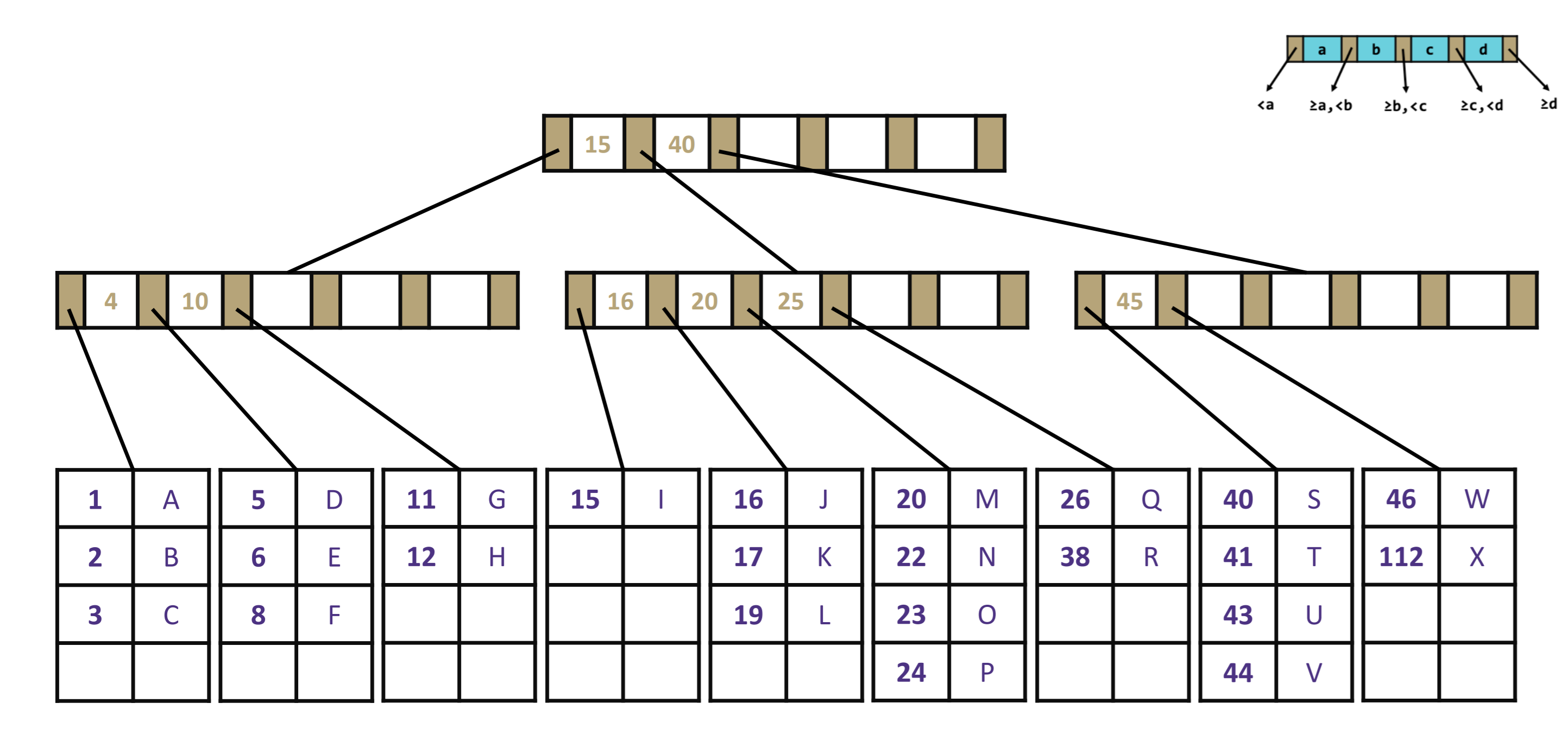Memory and Caching
Table of contents
How memory looks
How memory is used
B+ trees
Computer components
For each of the components of a computer below, summarize how that component of the computer might be similar to and how it might differ from RAM (main memory). Compare their function and properties.
Question 1
CPU
Question 2
Disk
Question 3
Cache
Locality
For each of the following code samples, identify whether they are good examples of spatial locality or temporal locality (or neither). Select all that apply and explain your answers.
Question 1
public void sum(int[] arr, int loc, int target) {
for (int i = 0; i < target; i++) {
arr[loc] += i;
}
}
Explanation
This code accesses the same piece of data arr[loc] over and over again.
Question 2
public void addTwo(int[] arr) {
for (int i = 0; i < arr.length; i++) {
arr[i]+= 2;
}
}
Explanation
When an address is accessed from the RAM, it pulls nearby addresses up to the cache. Since arrays are contiguous, you can access those other addresses also from the cache.
Question 3
public class MyLinkedList<T> {
private Node<T> front;
public void removeFront(int k) {
Node<T> curr = this.front;
Node<T> prev = null;
for (int i = 0; i < k; i++) {
prev = curr;
curr = curr.next;
prev.next = null;
}
this.front = curr;
}
private static class Node<T> {
public final T data;
public Node<T> next;
}
}
Explanation
Linked lists are not stored contiguously in RAM. When we access one element from the list, other elements that come after are not accessed and put in the cache. This requires taking many trips to RAM, which take longer than trips to the cache.
B+ tree locality
For each of the get calls below, describe the nodes that are accessed in order to get the value associated to the given key.
Question 1
get(41)
Question 2
get(25)
Question 3
Which of the following statements are true about B+ trees?
- Minimizes height so there are fewer nodes to traverse the tree and more nodes at each level.
- All relevant information about a single node fits in one page.
- We use as little of the page as we can because it’s slow to access disk.
- Searching within a node is fast compared to disk access time.
- Searching within a node is slow.
Suffix arrays
We’ve now seen two ways for more memory-efficiently representing trees as arrays.
- Binary heaps are complete trees, so it has a perfect for the array representation.
- B+ trees take the idea of 2-3 trees and expand the number of keys per node.
But it turns out that there’s actually another data structure analogy based on concepts we’ve already learned. Remember how we used a ternary search tree to store all of the suffixes of a given DNA sequence? This approach was actually inspired by a real data structure known as a suffix tree!
To improve memory efficiency, algorithm designers turned the suffix tree into the suffix array. The suffix array is the data structure concept behind real-world DNA database systems.
